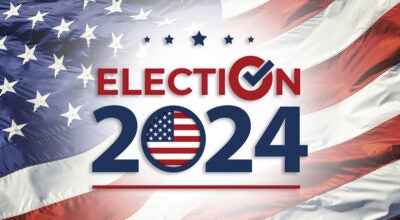Tea party: Much noise, but an impact in November?
Published 12:00 am Tuesday, April 6, 2010
WASHINGTON (AP) — The tea party is making a lot of noise, but the angry-at-government movement has yet to establish itself as a force that can determine the outcome of November’s congressional elections. The key could be forging alliances with GOP candidates, but tea partiers in nearly every state are leery of that if not downright opposed.
“The day there’s an organized tea party in Wisconsin,” says Mark Block, who runs tea party rallies in the state, “is the day the tea party movement dies.”
The Associated Press reviewed tea party chapters across the country, interviewing dozens of local organizers as well as Democratic and Republican strategists to produce a portrait of the movement to date — and its prospects for tipping congressional elections this fall. Though it’s far too early for any long-term verdict on the tea party — even defining what short-term success would be for its members can be a challenge — the AP found that:
—The embryonic movement is not as much a force that drives public opinion as a reflection of it.
—Local chapters are underfunded, loosely aligned and often at odds with one another.
—The lack of a single leader, issue or strategic goal sets them apart from most politically potent movements.
America’s tea party is a hodgepodge of barely affiliated groups, a home to the politically homeless, a fast-growing swath of citizens who are frustrated with Washington, their own state capitals and both major political parties. Most describe themselves as conservatives or libertarians. They rarely identify themselves as Democrats.
Last year’s rise of the tea party closely tracked polls showing declining faith in government, confidence in the nation’s future and approval of President Barack Obama and Congress. Government bailouts and Obama’s trillion-dollar push to overhaul the U.S. health care system proved too much for people like Ralph Sprovier, a regional coordinator for Illinois Tea.
“We’re regular people who are p—ed off at our government — period, end of story,” says Sprovier. “Defend us, don’t spend more than we have, get the budget balanced and listen to what we say.”
But listening doesn’t guarantee understanding. Tea party regulars back candidates who support debt reduction. Or free markets. Or states’ rights. Or civil liberties. Or tort reform. Or term limits. Or abolishing federal agencies. They champion some of these issues — but not always all of them — and sometimes many more. Generalizing the movement is a fool’s errand.
This we know: Tea parties know how to produce crowds. In the footsteps of the Boston Tea Party more than two centuries ago, organizers use e-mail, social networking and other electronic tools to draw enormous numbers of disaffected Americans together. Some wear Revolutionary-era garb and carry signs bearing the language of 18th century patriots — “Don’t tread on me!” is a popular one.
But rally building is no big trick in the era of Twitter and Facebook, when people with cell phones can summon crowds for events as frivolous as snowball fights and bursts of song.
Beyond rallies, the movement thins out.
Too broke to buy a copy machine, a tea party group in Alaska plucked a copier from a landfill.
A chapter in Kansas lost its only laptop, and with it the group’s membership list.
Unversed in media management, two local leaders suggested in a nationally broadcast interview that they favored abolishing Social Security. Democrats quickly assigned that view to the entire movement.
The organization seems strongest in places where lobbyists and GOP party operatives like former House Majority Leader Dick Armey pull levers. Their involvement hardly squares with the anti-political sentiment that drives grass-roots activists like Bill Hennessy.
“I’m not into politics,” the Missouri rally organizer says.
The tea party itself is not a political party — and there are no signs it ever will be.
“That’s the beauty of it,” says George Burton, a Minnesota electrician and history buff who dressed in period garb for a rally he organized in Brainerd, “We don’t take any orders from anybody.”
The tea party has no single issue around which people rally — taxes comes closest — and it has no clear leader who drives the organization’s message, motivates followers and raises money. Indeed, the hundreds of tea party chapters and tens of thousands of its activists cannot agree on the most basic strategic goal: whether to try to influence the current political system or dismantle it.
So what does that mean for November?
With no candidates of the tea party’s own, Republican strategists still hope tea party groups will align with the GOP to defeat Democrats. They want the movement to share its e-mail lists, raise money for the party and send its volunteers to the homes of likely Republican voters. That could make a difference in dozens of races.
If the tea partiers stay apart?
“The American experience is if you don’t go through one of the two major parties or you don’t home in on a single issue as a litmus test, it’s very difficult to be impactful across the country,” says Matt Schlapp, a White House political director in President George W. Bush’s first term who currently advises congressional candidates.
“We know who we are against,” says Justin Holland, organizer for the North Alabama Patriot Tea Party. “We don’t quite know who we are for yet.”
That is one of many differences between tea partiers and past movements that made a mark. In the 1990s, a period of voter disenchantment not unlike today, Ross Perot’s supporters formed a third party. Perot lost, but he carried enough votes to influence two presidential races, and his positions on trade and deficit reduction remained in the political bloodstream.
Perot’s former running mate, Pat Choate, says the tea party is far from establishing itself as a lasting movement.
“The real test, seems to me, is whether or not they decide to field candidates,” he says.
For many, that’s a tough sell.
“I’ve already been involved in party politics,” says Gia Gallegos of Reno, Nevada, “I don’t want another party.”
So far, tea party groups lack the galvanizing issue that made the anti-tax movement a success in California decades ago.
“I understand what they’re angry about because they’re angry about some of the same things that I’m angry about,” says Ken Khachigian, an aide to Republican presidents who is now a GOP consultant in California. “But it’s a disparate force right now, and movements don’t have an effect until they have some cohesion behind them.”
It pains Republicans like Khachigian to concede that the movement is not leading directly to GOP gains.
Says Schlapp: “Republicans who assume this is a Republican effort or something playing right into the Republican playbook are making a big mistake.”
Despite its potential value, the movement worries GOP candidates, particularly out-of-touch incumbents, he says. “For many Republicans and Republican strategists, this is too organic and uncontrolled, and that’s a little scary for them.”
The tea party gained political credibility after Republican Scott Brown’s victory in Massachusetts’ special Senate election. But activists were not key organizers in his race. The question is whether tea party-affiliated voters would have backed Brown anyway, given that many are conservatives.
Upcoming GOP nomination contests will offer further tests. Republican strategists are keenly watching Senate GOP races in Arizona, Delaware, Illinois, Kentucky, Kansas, Florida and Utah, where victories by tea party-backed candidates could tilt the party to the right.
In Arizona, former presidential candidate John McCain turned to his former running mate — tea party favorite Sarah Palin — to help stave off a primary challenge from the right.
In Florida, tea party darling Marco Rubio is making waves in his effort to upset Gov. Charlie Crist in the GOP Senate primary. But is that cause or effect?
Republicans wonder whether the tea party is bringing new voters, new money and new volunteers to Rubio or simply stirring his conservative base.




